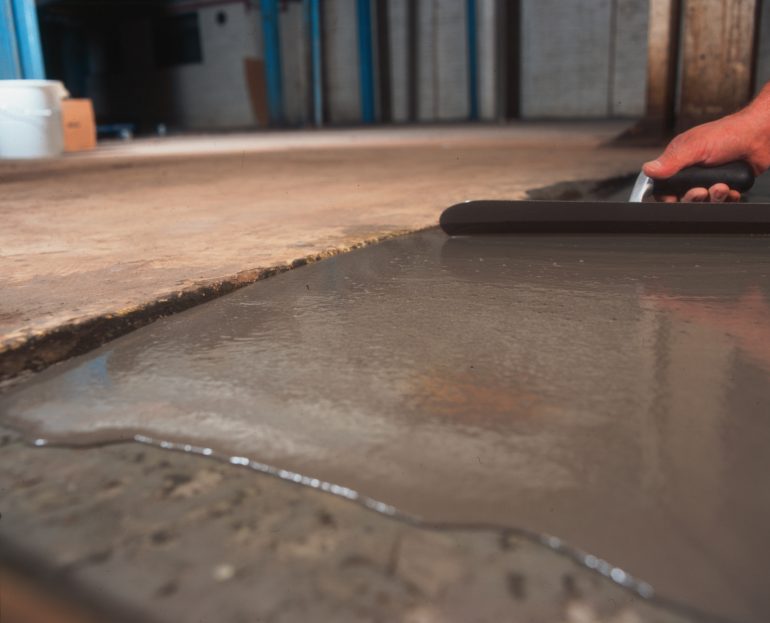Raising Floor Levels Quickly and Easily

When raising the level of subfloors, only smoothing compounds especially formulated for this purpose are up to the task.
Sometimes, flooring contractors need to raise the level of a subfloor with a base compound before new floorcoverings can be installed – after removing thick ceramic tiles and adhesives, or to level up floors between an existing building and a new extension, for example. There is a wide range of smoothing compounds on the market that can typically be applied up to a maximum thickness of 20mm ahead of the installation of floorcoverings. But what if you need to raise a floor more than a couple of centimetres? This is when problems can occur using a standard smoothing compound.
The Problem
Standard smoothing compounds are primarily made up of cement and are often mixed with water. It is the water content in the compound that allows it to flow easily but it can also lead to a separation of the materials in the compound (e.g. sand, aggregate and cement) when applied thickly. This separation can lead to layers forming, with the densest materials at the bottom and the least dense at the top. Some layers will be weaker than others and this can seriously compromise the strength of the smoothing compound when dry.
Also, heat is generated when cement reacts with water, which causes the product to expand and later contract when it cools down again. This increases the risk of thermal cracking leaving you with unattractive and damaging cracks in the subfloor.
What’s the Solution to Raising Floor Levels?
F. Ball’s Stopgap 600 deep section base compound provides contractors with a dimensionally stable product that can be applied at thicknesses between 5 – 50mm in one application, allowing contractors to raise subfloor levels quickly and easily.
To reduce the chance of heat expansion, the amount of cement and water has been reduced and combined with additional plasticising and stabilising admixtures so as not to weaken the material. This minimises the separation of materials when the compound is applied in a thick section, whilst maintaining excellent smoothing characteristics.
Stopgap 600 also cures to chemically bind the water in the mixture. This means that flooring contractors are not forced to wait for all of the water to evaporate naturally as with other smoothing compounds. As a result, the drying time of Stopgap 600 is dramatically reduced and it sets in as little as three hours after application.
If required, the smoothing compound, once set, can be capped with another smoothing compound to create a perfectly smooth surface ready to receive floorcoverings. However, only smoothing compounds that will chemically bind all of the water into the mixture should be used. F. Ball recommends capping Stopgap 600 with either Stopgap Fast-Track 30, Stopgap 300, Stopgap 800 or Stopgap 1200. As with traditional smoothing compounds, the use of an appropriate spiked roller will help to level the compound and remove any entrapped air.
Once the smoothing compound has sufficiently dried, the flooring contractor can proceed to install floorcoverings.
A Note on Priming
It is almost always essential to prime a subfloor before applying a smoothing compound. Used over absorbent subfloors, primers create a film to prevent the unacceptably rapid drying of a smoothing compound, which helps to develop both the overall strength performance and open time. Priming also reduces the formation of ‘pinholing’ caused by the slow escape of air from absorbent surfaces.
When used on non-absorbent surfaces, such as terrazzo or ceramic tiles, primers serve the important role of assisting the adhesion process between the subfloor and smoothing compounds applied over it. This is particularly desirable where smoothing compounds are applied at thicknesses greater than 20mm, where the bond line is subject to increased stress as the smoothing compound dries.
F. Ball has recently launched a fast-drying primer developed especially for use over non-absorbent surfaces. Stopgap P141 has been specially made to create a textured finish and enhance bond performance between subfloor and smoothing compound. This makes it the superior choice of primer when applying smoothing compounds at thicknesses greater than 20mm.